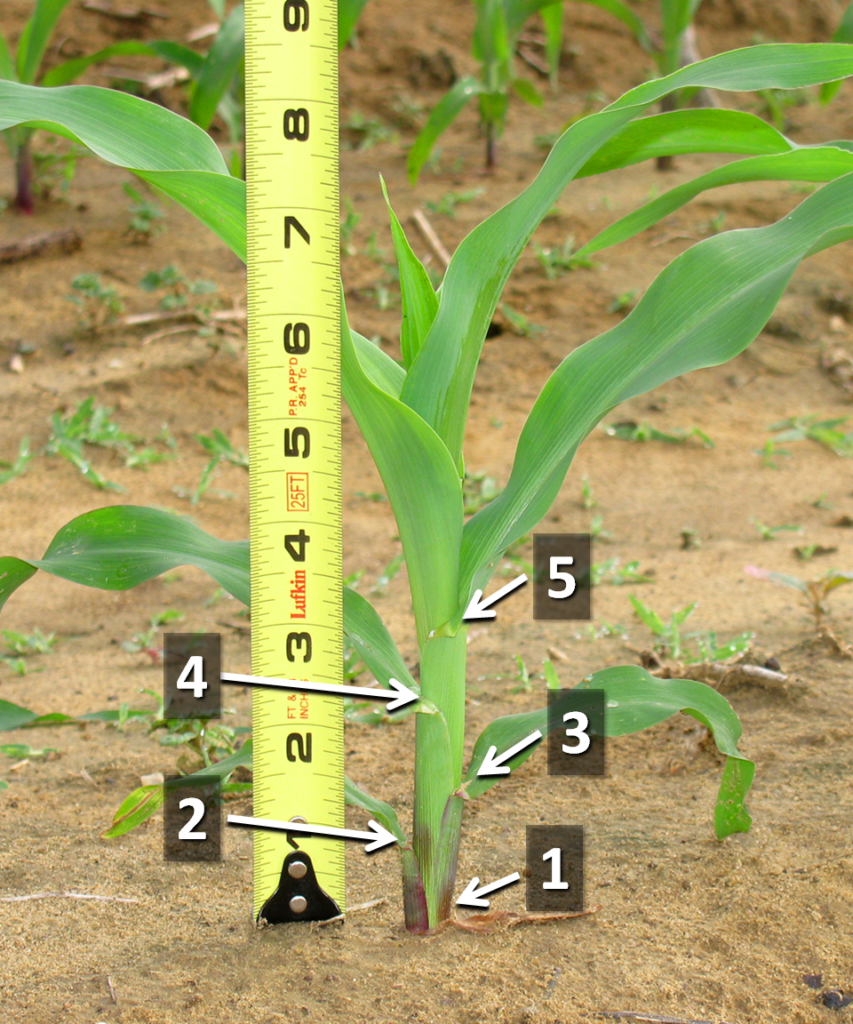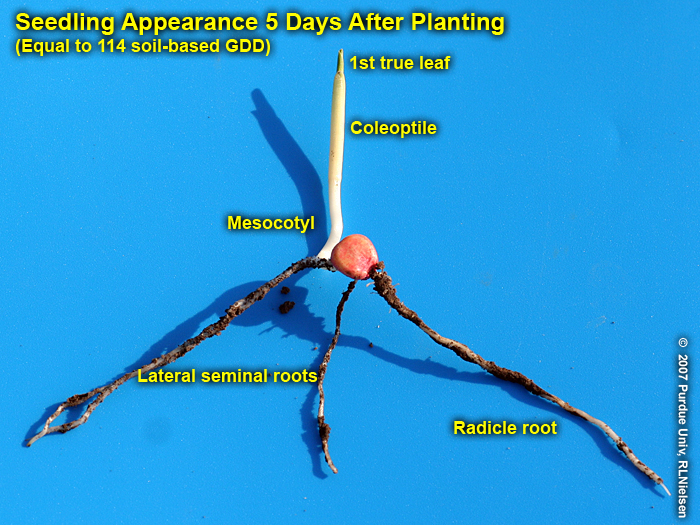Published July 11, 2019 | By Mike Petersen
Please take this as good news from the field. What so many of us have heard is the Agriculture world as we know it is devastated and it is all falling into a heap. Yikes! That brings no encouragement to anyone that makes their livelihood from the soils.
We at Orthman Manufacturing are supporting a project with a bright group of students at the High Plains Community Vo-Ag chapter in Polk, Nebraska about 1 hour west of the capitol city Lincoln. These young men and women led by Vo-Ag instructor and adviser Tom Hoffman are working on a field sized project of 11+ acres (4.5ha) to study the advantages/disadvantages of common starter products in irrigated corn in a strip-tilled environment following the 2018 crop of soybeans. This field is offered by a local grower very close to the high school and town. Orthman is partnering to provide manpower, scientist and Strip-Till equipment; a local fertilizer supplier is partnering to provide some of the nutrients, especially the starter products as well as herbicides, fungicides if necessary, and the local Pioneer Seed distributor is supplying seed products. These folks are greatly appreciated and engaged.
First few days in the corn plants life. [Courtesy: Purdue University]
The students are involved with the project to make field measurements and sample the soils and crops for nutrients to determine how to grow a crop with both sustainability and best yields possible. Mr. Hoffman has the students out in the field collecting data with myself, Mike Petersen, Orthman Agronomist as well as Pat McNaught, Territory Rep for Orthman to learn strategies and management principles that will enrich their education and maybe career opportunities long into the future.
At the V3 to V4 stage of the corn crop the students measured seedling root growth, height, plant density (population) to get an initial set of data to identify the effects of starter fertilizers compared to control with no starters used at the time of planting. With this data the students will learn hopefully three key points; 1) Does spending the dollars (per acre basis) on better quality and plant-ready nutrients pay, 2) Can we say that yields will increase with starter packages in the seed trench which are liquid products, and 3) Why are starters even necessary in a corn-soybean rotation? More questions are out there but these were three the students identified last winter.
Agronomically speaking, any grower that uses starter fertilizers are setting up their corn crops yield and growth potential. So many will limit their thinking to does it affect yield? We always hope so, yet so many things remain in the hands of each day of heat, cold soil and air temperatures, rain, no rain or no irrigation added, sunlight, wind, hail, insects, weed pressures, diseases, herbicide damage from the farmer or neighbors, additional fertility, soil compaction and the list goes on. Starting with the best chances where the initial root system actively “runs into” nutrient sources before the soil microorganisms ramp up in their performance with warming soil temperatures is in my minds eye a “no-brainer.” Besides folks, we are not talking about a glut of N or P or Zn or whatever, we are speaking about very small doses of nutrients. Quickly, dispersing an ole myth; roots do not seek out nutrients, nor does it smell them or see them in the soil, the root has to literally run into them early on to be able to absorb the collective products. So a widespread scattering of nutrients on the soil surface and maybe tilling them in as we have done in the past, the crop root efficiency of absorbing products which you spent money on is less than 30%. That is why we are such strong advocates of precision placement both below the seed and in the seed trench. It is one of our three guiding Strip-Till principles at Orthman. Those first few hours/days after radicle root eruption from the seed itself is crucial for the root to encounter food sources to create as seen in the image above so with N,P,K,S and micros of Zn,Cu,Fe,Mn etc readily available for the miniature switches in the DNA of the plant cells to come on for growth potential. I have explained it this way frequently; like in the back of a church auditorium the lights need to come on in the front and along the side walls for people to see as they walk in and sit. Out of 25 switches only 13 need to come on for that time of entering. Akin to that scene, these switches are turned on for the early stages of growth and movement of those elements into the leaves and stalk as well as the root cells to be used later. As the root absorbs these nutrients the plant will develop with a certain potential, accelerated or maybe not. The gene pool is activated to an advanced degree and now is influenced by water, temperature, and sunlight. The entire process of cellular reproduction of leaves, stems, flowers, roots and photosynthesis can have a great beginning or one of … so-so.
The FFA students then walked back into the plots to sample entire plants in the different treatment zones to cut down at the ground surface to obtain dry weights of plants to gain a perspective whether the starter plus micronutrients offered benefits. This was done at V5-V6 stage as shown in picture below. The corn crops terminal growth point is right at or just above the soil surface at this time. We are awaiting those results after air drying for a time.
We will be making those results along with the other data collected on this website in the near future. The young folks (young men and women) of the High Plains Community FFA Chapter will be putting together a report and presentation for the parents later on.
When any of us hear that they are going to minimize or not use starters in a high yield expectation of $300+ bag of seed corn could well have shot a hole in the foot before a 130 day walk. Yep, not a good thing! We are expecting big things out of those highly touted corn hybrids, they have great potential but then not using any starter products lacks foresight. Sure I realize budgetary restraint for 2019 is a big rock in the road. Trying to go around a huge rock on a road with a vertical wall on one side and 675 foot drop-off on the other with only 3 feet of room to spare is scary. But so is the view screen of your yield monitor come fall that is bouncing down around 170 bushels per acre when you expected 225 bpa. Ugh!
With this and more the students of this progressive and by the way Nebraska FFA has entitled this school in Polk, Nebraska as the number one rated FFA chapter of all the schools in Nebraska. It is a great honor and pleasure that we at Orthman get to work with Tom Hoffman and ‘his’ young people. They are learning very valuable lessons and principles in agronomics, a little about plant genetics, and what steps their parents make in growing corn or soybeans in East-Central Nebraska. Mr. Hoffman is pouring into these young folks what it takes to become leaders, Ag business professionals, farmers, cattlemen and cattle-women, scientists, teachers/educators and even crusty ole soil scientists.
Image Below: Plant stage where students sampled for dry matter weight differences.
by: Mike Petersen, Agronomist for Orthman Mfg, Inc.

